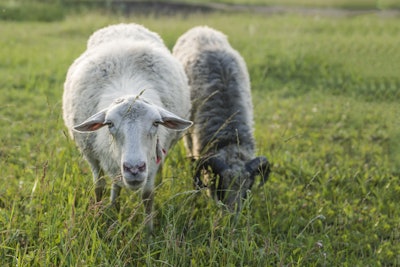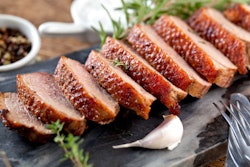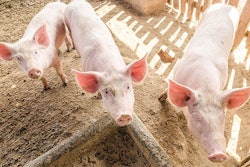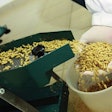
The threshold for chronic copper toxicity levels in sheep is so low that we prefer to keep animals at a chronic marginal deficient status.
Ruminants like their copper so much they store any excesses in their liver, unlike monogastric animals that excrete most of copper ingested above requirements. Grasses – the major feed for ruminants – contain very low levels of copper and at very, very low absorbability (less than 5%). As copper in grass varies according to variety, soil type, season and interferences from iron, molybdenum and sulfur, ruminants do a good job hoarding it for a rainy day. After all, copper is only second to zinc as the trace mineral with the most functions in the organism. Lack of copper can manifest as mild conditions as depigmentation (gray hair, perhaps) and as severe as death, with everything in between. So, it is always good to have a good reserve of copper, especially if you are a sheep with long curly hair (hair requires a great amount of copper).
All animals are sensitive to high levels of copper, but none are expected to die from poisoning under natural conditions (unless they forage around a copper mine.) Sheep appear to be the most sensitive of the farmed ruminant species, with cattle and goats coming next in order. A sudden increase in copper intake is highly unlikely under commercial farming conditions, unless a human mistake in feed preparation is involved. More likely for sheep is a stressful condition, including a sudden increase in copper intake, that would trigger liver cell destruction, releasing enormous amounts of copper. This, then, results in quick death, unless rapid measures are not taken. Unlike other animals, the threshold for sheep is much, much lower and this is why farmed sheep are not given supplemental copper.
This, however, has a very negative effect. Most ewes today are marginally deficient in copper, which manifests as low reproductivity and poor lab growth performance. This is an acceptable condition worldwide for small farms and for feed manufacturers preparing complete feeds for general purposes. But, a farm with 10,000 ewes cannot ignore this fact as easily as a backyard operation with 10 ewes.
Luckily, a nutritionist along with a veterinarian can determine the copper status of a herd and establish a program that will keep sheep provided with enough copper, avoiding chronic copper poisoning. But that takes some considerable daring.


















